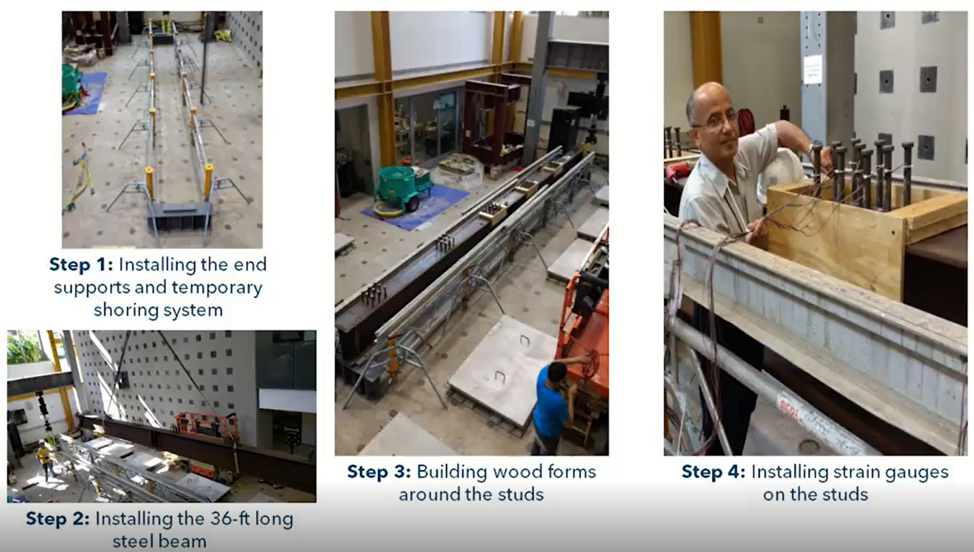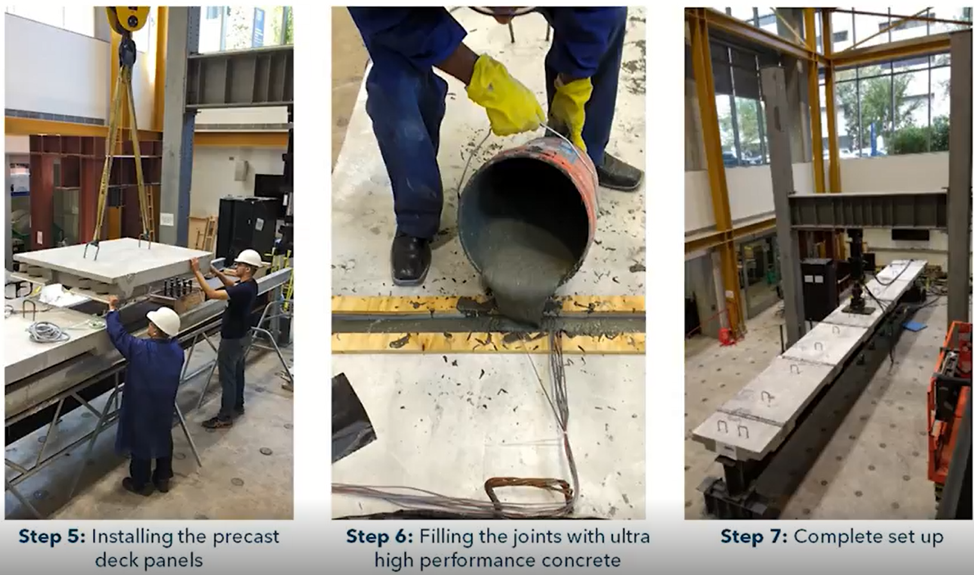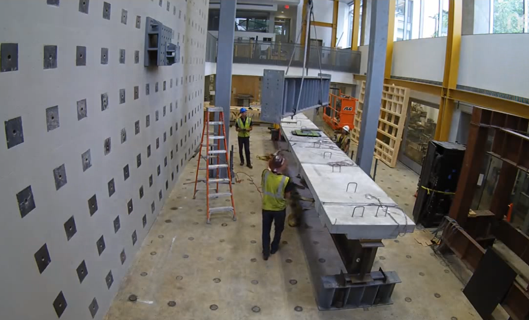A new and Innovative precast bridge deck system
A new and Innovative precast bridge deck system (Prof. Badie)
Through the NCHRP 12-96 research project, funded by the National Academy of Sciences, Professor Badie and his research team developed a simplified full-depth precast concrete deck panel system that satisfies the requirements of the accelerated bridge construction (ABC) initiative established by the Federal Highway Administration (FHWA).
The new system uses ultra-high performance concrete (UHPC) in conjunction with extend 6-ft spacing between discrete shear connector clusters. The system can be used with steel or prestressed concrete girders and utilizes the confinement techniques developed earlier in the NCHRP 12-65 project. The NCHRP 12-96project went through many phases including concept development, analytical verification, experimental verification, and development of proposed AASHTO LRFD Specification language for the design, fabrication, and construction.
The analytical investigation was conducted using the GW Colonial One High Performance Computing Facility, which contains three clusters that allow researchers to run sophisticated and high-output finite element commercial packages. Part of the experimental investigation was conducted in the SEAS High Bay Testing Facility (HBTF), where a 40-ft long bridge mockup was built and tested for fatigue and static loading conditions (video 1, video 2, video 3). While being tested, the bridge mockup was visited by many dignitaries including GW President (CEE News).
The HBTF, housed in the Science and Engineering Hall (SEH), is equipped with a strong wall, strong floor, advanced MTS system, state-of-the-art data acquisition system, 500-kip load gantry, 20-ton overhead crane, and 300-kip self-equilibrium frame. The experimental activities were also supported by the SEAS concrete mixing lab, martial testing lab and engineering machine shop (Core Facilities).





